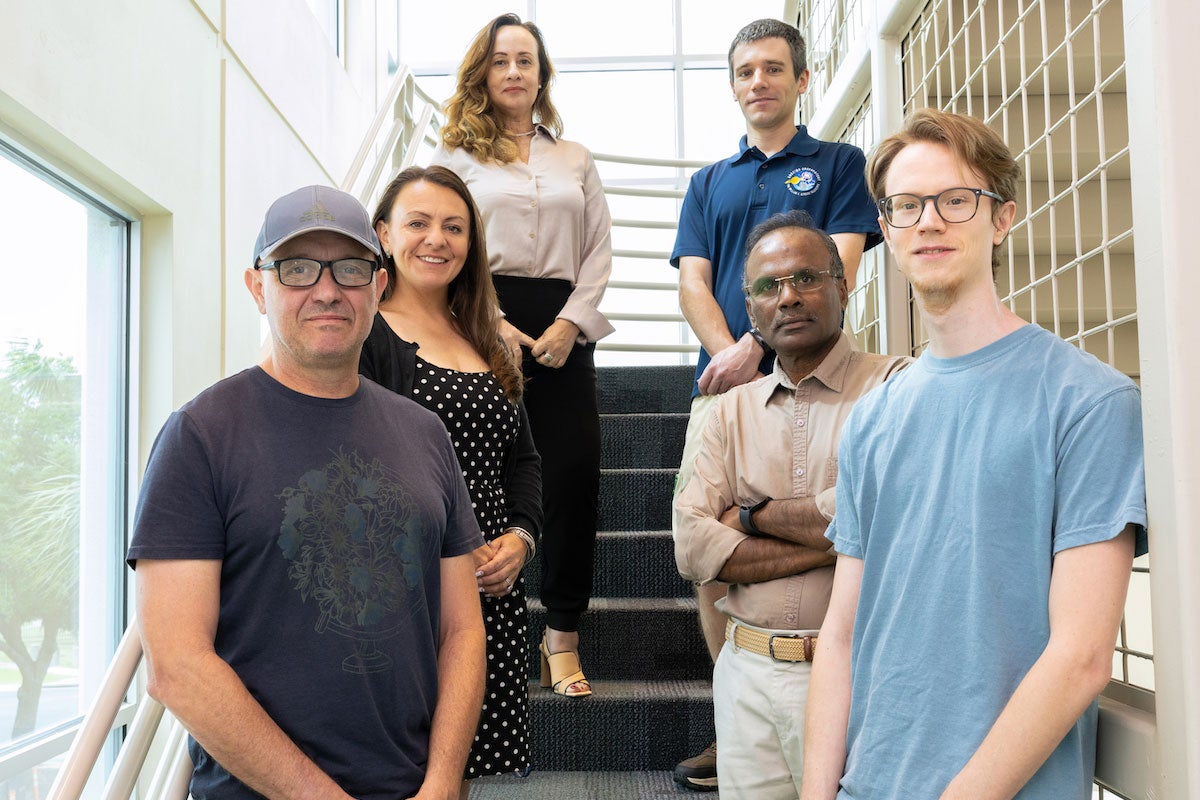At the top of a mountain on Puerto Rico’s beautiful island of Culebra, two trailer-size containers sit as quietly as the nature around them. Here, with a view of the Caribbean Sea below and the night constellations above, scientists from UCF’s Florida Space Institute (FSI) are busy collecting data at this remote research hub called the Climate Center for Open Research and Education CCORE).
“We consider Puerto Rico a beacon of science,” says FSI Director Julie Brisset. “Our scientists in Culebra are now gathering precise data on how the upper atmosphere reacts to human activity and solar activity. The data provides us critical input regarding climate change and the safety of our satellites.”
The equipment on the mountaintop is the offspring of Puerto Rico’s iconic Arecibo Observatory. The research from here carries on a portion of a legacy that began when the world’s largest radio telescope at the time (more than three football fields in diameter) became operational in 1963. The legacy gained momentum when the U.S. National Science Foundation chose UCF to manage the observatory in 2018, but then came to an abrupt halt on December 1, 2020, when cable failures caused the 900-ton instrument platform to collapse onto the dish, destroying the 1,000-foot-wide telescope.
“I remember walking up the hill that morning to the site and seeing people crying,” says Olga Figueroa-Miranda, associate director of business and education development for FSI. “Everyone in Puerto Rico, even our staff, thought it was the end — but it was not.”
It took a year and a half to clean up the site. A team from FSI optimistically developed plans for a new telescope in hopes of someday securing funding for it. In the days after the collapse, researchers turned their focus to analyzing the one-of-a-kind data that had been collected for decades.
“There was a misperception that the work ended when the dish fell,” Brisset says. “But we needed the research team to move forward with important planetary science. For example, they have data on hundreds of asteroids that need to be analyzed for specifics like size, density and orbital path. We now know that an ‘Earth grazer’ will pass through on April 13, 2029. We’ve also been using the high-tech instruments that remained intact. Some of them we sent to Culebra.”
And that’s how the island of barely 1,000 residents became home to CCORE and its GPS receivers, lasers, cloud sensors, spectrometers, interferometers and photometers. The high-altitude spot is close enough to the equator and far enough from atmospheric interference for researchers to make discoveries about the space environment that would otherwise go undetected.
“The location is breathtaking,” Figueroa-Miranda says. “It feels like another galaxy.”
There’s a mix of emotion Figueroa-Miranda’s voice. Born and raised in Bayamon, Puerto Rico, she and her siblings were among tens of thousands of local schoolchildren who visited the Arecibo Observatory on field trips and grew an interest in STEM. She understands first-hand the meaning of the research — scientifically and culturally.
“Arecibo became as important to Puerto Rican pride as our food, our nature, and our beaches. That’s why we grieved the loss,” she says.
The despair turned to hope, because after the telescope collapsed and broke hearts, UCF and FSI made a commitment to retain not only the unaffected instrumentation but a much more important resource: People.
“During one of the worst times of our lives, UCF and FSI made sure we had a home,” says Figueroa-Miranda. “They reminded us how important this work is. And now we have CCORE. Everyone in Puerto Rico knows that UCF did not leave us. They value us. It makes us proud to have this essential role in scientific research.”
Despite not having the large-scale observatory, Arecibo scientists at FSI are still writing proposals for grants to study critical science and are publishing studies based on past data obtained with the telescope, including examining near-Earth asteroids and uncovering the mysteries of gravitational waves. There are now 10 Arecibo scientists working at UCF’s FSI in Orlando.
“We’re the kind of people who keep going,” says Brisset. “We moved everything we could to Culebra because we know we can build a great climate and research center there. What you see there now is hopefully just the beginning.”
Figueroa-Miranda envisions a permanent facility on the mountain, with labs where undergraduate students come to collaborate and bring theories into practice.
“We always thought the opportunities to study space in Arecibo were limitless,” Figueroa-Miranda says. “Now we’re looking to Culebra with great hope for the future.”




